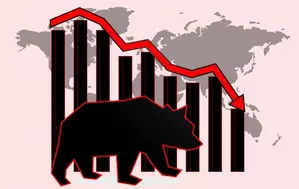 |
|
The Sensex, a key benchmark index for the Indian stock market, experienced a sharp decline of over 1,000 points, a significant drop that has left investors wondering about the contributing factors. This article explores the five primary reasons behind this sudden market downturn, providing insights into the economic forces at play.
One of the major contributors to the Sensex's fall was the decline in major financial stocks. This drop was driven by concerns regarding upcoming data on bank loan and deposit growth. The widening gap between these two metrics has raised anxieties about potential liquidity issues within the banking sector. Investors are apprehensive about the implications of this trend, leading to a sell-off in financial stocks.
Adding to the market anxiety was the anticipation of the US non-farm payrolls report. This crucial economic indicator provides insights into the health of the US labor market. If the August report disappoints, revealing a higher-than-expected unemployment rate, it could prompt the Federal Reserve (Fed) to consider a more aggressive interest rate cut, potentially by 50 basis points. This potential change in monetary policy could significantly impact global markets, including the Indian stock market.
Another contributing factor to the Sensex's decline was market panic related to the Securities and Exchange Board of India's (SEBI) deadline for Foreign Institutional Investor (FII) disclosure norms. Although this regulatory change is not expected to affect India's long-term attractiveness to foreign investors, it created short-term volatility in the market. The uncertainty surrounding the new regulations caused some investors to take a cautious stance, contributing to the market downturn.
Furthermore, a lukewarm global market mood contributed to the Sensex's fall. Major indices around the world, including the Nasdaq, Japan's Nikkei, S&P futures, and Stoxx 600, were experiencing declines ahead of the US jobs data release. This global sentiment of caution further amplified the downward pressure on the Indian stock market.
Finally, foreign institutional investors played a significant role in the Sensex's decline. On September 5, FIIs turned net sellers, offloading equities worth Rs 688 crore. This selling pressure added to the existing market negativity, further exacerbating the Sensex's fall.
Source: ET Market Watch: 5 key reasons behind Sensex's over 1,000 points fall
